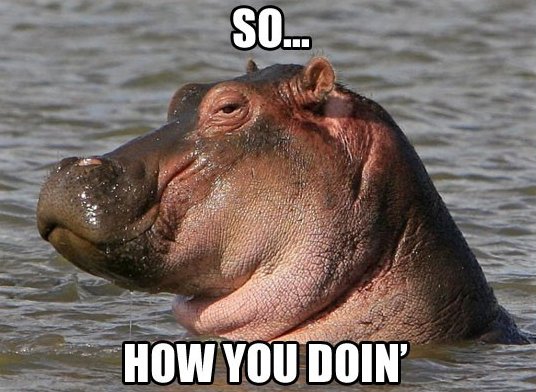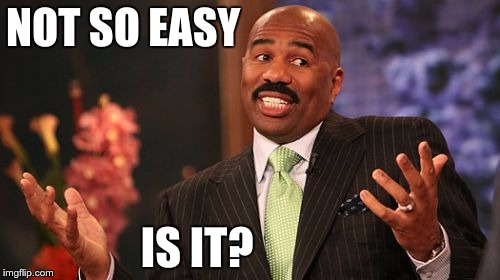3 minutes to improve any meeting
 It often happens that you run into a meeting (stand-up, retro, weekly meeting with colleagues, f2f with the boss - underline), but your thoughts remain somewhere outside the room?
It often happens that you run into a meeting (stand-up, retro, weekly meeting with colleagues, f2f with the boss - underline), but your thoughts remain somewhere outside the room?From the banal “did the wife turn off the iron when we left the apartment” to “what did the boss want to say with the last letter”. A swarm of thoughts in my head can be inspired by both events that have happened a long time and the previous meeting.
A rather typical scenario happens next: “charged” colleagues start a meeting, discuss something vigorously, until at some point they do not notice that you are “not here”. And then the reactions can vary from "what happened to you?" To "you just do not care about the important things that we are discussing here!". It will depend on the general level of culture and relations in your team.
And, of course, irritation from what is happening is coming at you, because at the moment you really cannot give out "yourself real" and the team does not receive from you the value that you could receive.
')
There is one technique that takes from three to five minutes, which helps to level expectations and make the meeting more productive for all participants. It is called a check-in (hereinafter, we will Russify this term - the check). At one time, I saw this practice from the guys from holacracy.org and from the St. Petersburg Coaching Institute, and was able to apply regular meetings in our bank to several formats. In the article I will tell you about the theory and how the methodology falls on Russian realities.
What is checkin?
If you simplify as much as possible, the method itself boils down to one simple question that every participant of the meeting must answer in the presence of the others: “How are you doing, what is bothering you?” (Alternative: “Is there anything distracting you that you should know other participants of the meeting ")?

The answer to this question absolutely does not have to lie in the business context. One of the sincere answers might be something like: “I didn’t get enough sleep, and in fact I’m not quite in the mood for this meeting.” Then an interesting thing happens: the person has revealed himself to the others, has shown his vulnerability, and the task of the colleagues is to support, show (with a nod, smile, etc.) that “we understand you, and that this is normal.” And from this point on, everyone in the room will understand that if a not sleeping colleague was distracted for a minute, then in this, most likely, there are no emotions like “I am completely uninteresting to you”, this is due to a banal lack of sleep. And it becomes much easier for everyone to accept this, because everyone experienced similar sensations at least once in their life.
The meaning of the method is to go through a circle of answers to this question at the beginning of each meeting. In other words, each participant in the meeting must answer something. Here it is important to understand that the technique does not imply the extrusion of deep-seated problems and moral torments. Everything is at the mercy of the respondent and subordinated to the team culture and the general level of trust in the team.
According to statistics, checkin in the "healthy" team takes from three to seven minutes. Not much to make the meeting more productive.
An important aspect is the facilitation of this process. Someone from the meeting participants does not take the role of supervising what is happening. It is important that everyone is given a say, not interrupted, not condemned, not teased. No one will have the desire to say what is on his mind if, in a previous meeting, he received a bunch of tricks from his colleagues. It is important to maintain trust and respect for every thought that has been expressed.
It is also important to immediately agree that a check is not a one-time event. Only by making it a regular and compulsory practice can you achieve the desired effect and create trust in meetings. And you need to understand that this, at times, will be very difficult.
What is the value of this technique?
With proper application, you will be able to focus each participant in the meeting both on the subject of discussion and on each other. And most importantly - meetings are faster, decisions are made more often.
There are many great examples of how Chekin helps to remove perception filters, but I like this one described in the article by Christine Cobble :
“Once I conducted a two-day training for a management team. On the second day of the training, one of the participants (the big boss, who did not like to look vulnerable at all) decided not to speak to the chekin that he woke up at 3 am from a toothache. His compressed jaw, distorted facial muscles and harsh language were interpreted by colleagues as follows: “He is displeased with this conversation. He's mad". If he had spent a minute mentioning this fact on the check, then it would be much easier for his colleagues and supervisor to understand and accept his behavior. ”
How we use checkin at Raiffeisenbank
As already mentioned, we have seen this technique in a couple of companies in Russia and abroad. And at some point began to try
In my case we are talking about two teams:
- I and my subordinates
- I, colleagues and our common boss
Over the past couple of years, we have learned to conduct checkin in these formats. I will say straight away: I have never heard that the chekin worked in temporary teams. Still, there must be something that unites people long enough for confidence to be born.

What could be the difficulty:
- Talk introverts . It is very hard for introverts to squeeze something out of themselves except “everything is OK / I am with you / ready”. It takes time and support from the whole team to start talking. And the main thing is not to transmit, otherwise you will get the opposite effect.
- Do, no matter what . How many times was it when we run into the room to start a meeting, and someone says: “well, well, this is his check, is the topic burning, everything seems to be okay?”. It is extremely important to gather at this moment and spend 3-5 minutes on the check. And this is really hard, but over time, Chekina’s value outweighs the urgency of the questions.
- Facilitation . True, we need someone (especially at first) who will follow the process, not to let colleagues get involved with comments, jokes and all the rest. Over time, the need for this role will go away, but in the beginning it’s important
How does this help us?
- We have learned to pay attention to the state of colleagues and try to support each other during the meeting.
- Because of p.1, many decisions were made faster. A simple example: if at the beginning of a chekina a colleague on whom an important question depends, says that he didn’t sleep all night because of a child and now we have five percent percent, then we just don’t spend time for discussion and persuasion, and next once we make a decision as quickly as possible.
- The trust between colleagues has grown before our eyes. Chekin helps to become a little more human. Show yourself not as a function / boss / colleague, but as a person. And from here comes trust.
For us, this technique was suitable and very useful. Whether it will be useful to you depends on your context and culture in your company. It will be interesting to me to find out if anyone has any other methods to improve the quality of meetings held?
Source: https://habr.com/ru/post/354794/
All Articles